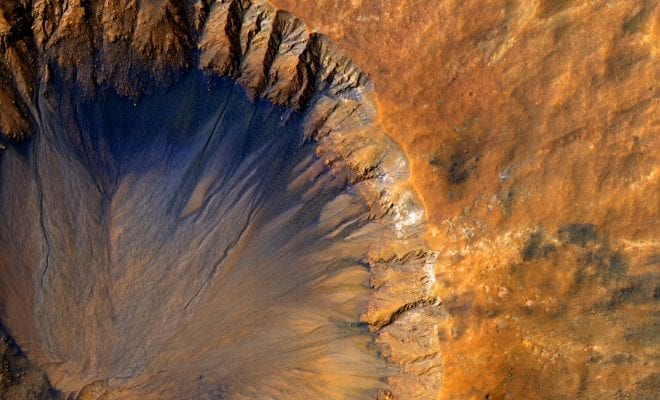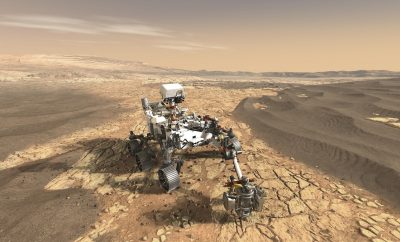 Sirenum Fossae, Mars. Photo by NASA on Unsplash
Sirenum Fossae, Mars. Photo by NASA on Unsplash
News
Space Exploration: The Landscapes of Mars
In the future, space tourism will be the next frontier of premiere vacation, and we will eventually have the opportunity to explore the red planet in our solar system.
While it may seem desolate when compared to Earth, Mars is home to some absolutely breathtaking views, including monstrous volcanoes, deep canyons, and expansive craters that may even be the host of deep running water. Here are some locations future Martian tourists could visit.
Olympus Mons – Giant Mountain of Mars
Perhaps the most widely known place on Mars, Olympus Mons is the most extreme volcano in the solar system. According to NASA, it is about the same size as the state of Arizona, and three times the height of Mount Everest. Thanks to its soft slopes, it would be relatively easy for explorers to climb. Upon reaching the summit, you would be met with a gargantuan 53-mile wide depression, formed by collapsed magma chambers.
North and South Pole
Though it may be a tad bit cold, the poles of Mars are the two ice regions of the planet. During the winter, temperatures are so cold that even carbon dioxide condenses out of the atmosphere into ice. While you’ll definitely want to be warm inside your rugged Mars explorer rover, the sight of the pole would be a captivating experience in an otherwise red-tinged planet.
Sirenum Fossae
This near 1700 mile long valley, caused by the depression of material between two faults, is located in the Southern hemisphere. of the red planet and is visible from Earth using a telescope
Medusae Fossae
These rock formations are some of the strangest on Mars, with some speculating that they were formed by an ancient UFO crash site. While more likely the cause of a large volcanic deposit and Martian winds, the Medusae Fossae’s unique appearance is unlike anything found on Earth.
Ghost Dunes
Said to be the remnants of huge water basins, the Ghost Dunes have been preserved over time by lava flow. These dunes are said to be one of the best places where we may find ancient microbial life, thanks to it being a prime spot safe from radiation and strong winds.
Valles Marineris – The Grand Canyon of Mars
If you’ve ever been to the Grand Canyon, you can understand how incredible the sheer scale of it can elicit wonder. However, on Mars the Valles Marineris dwarfs the Grand Canyon, measuring four times longer at roughly 1850 miles. Clearly visible from space, the canyon is said to have formed from lava flowing through the volcanic region, causing the planet’s crust to fracture and overtime growing into the expansive formation.





0 comments